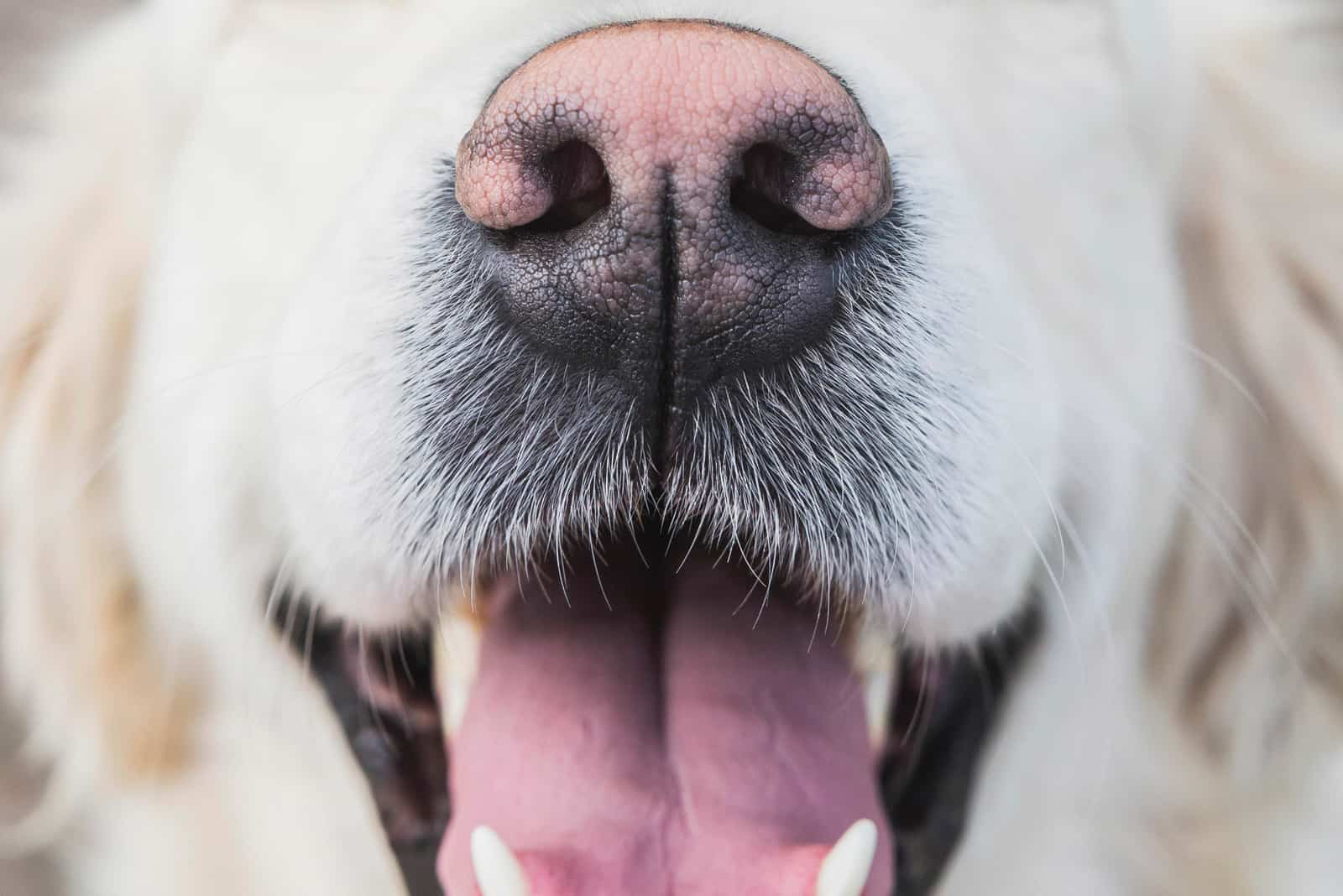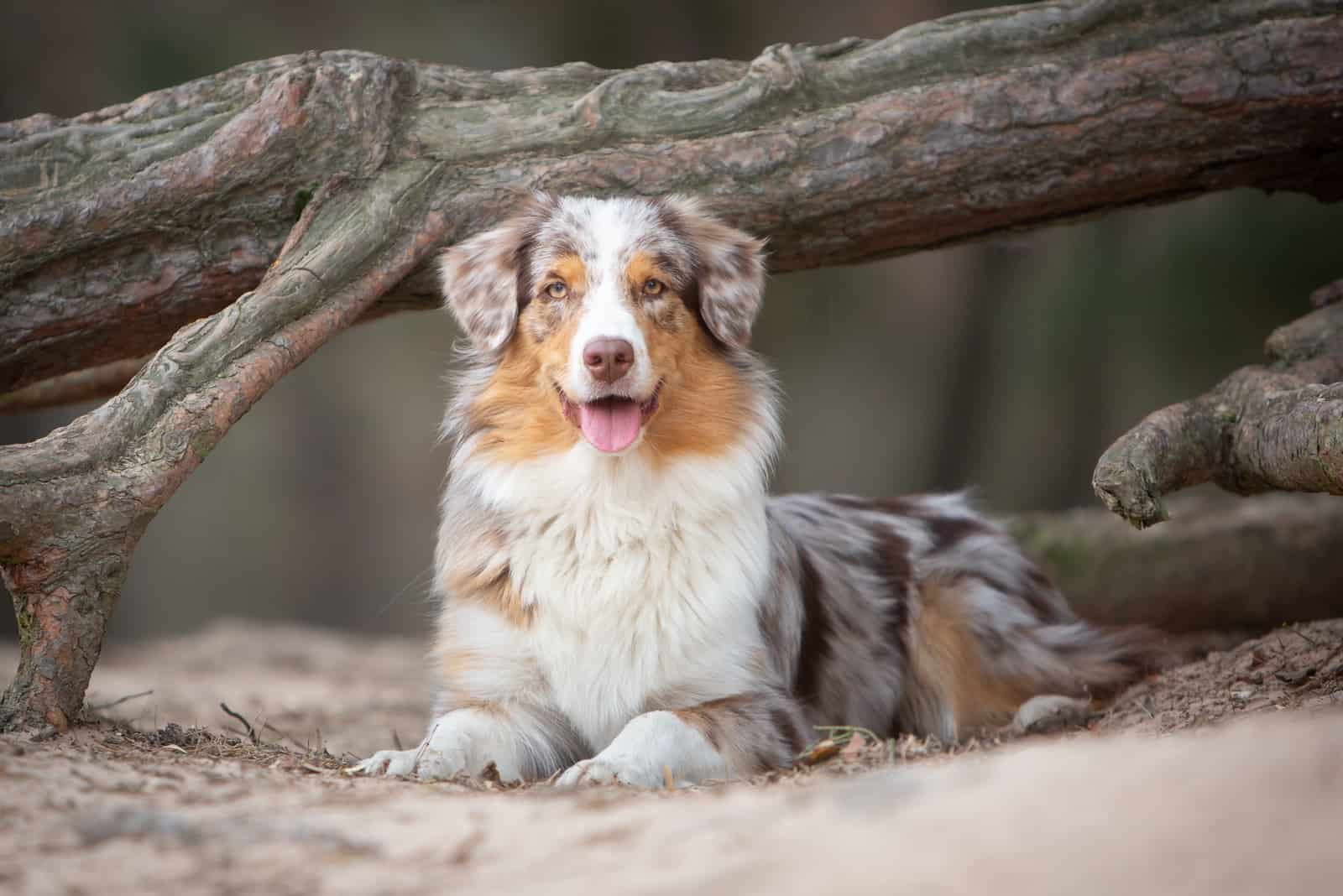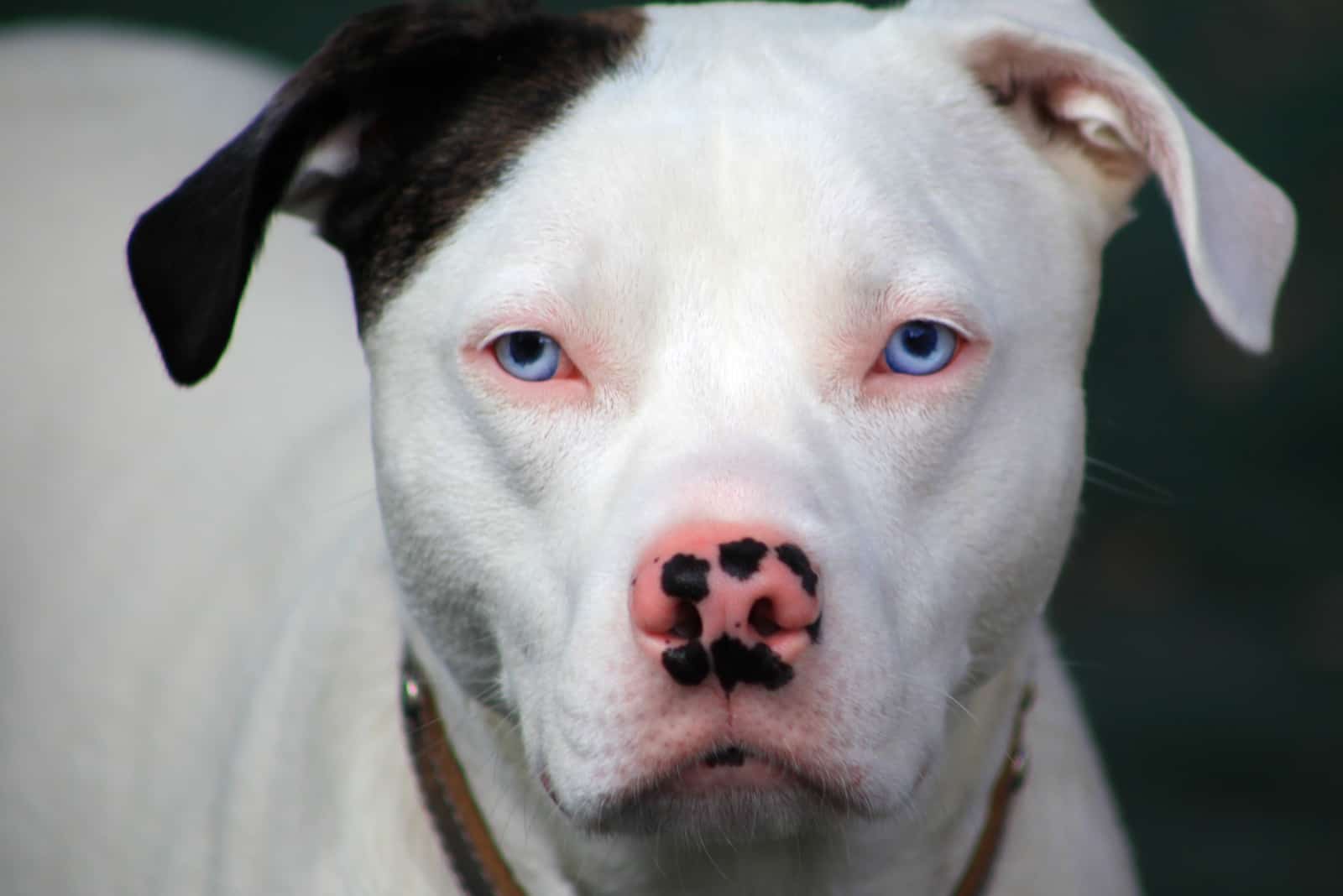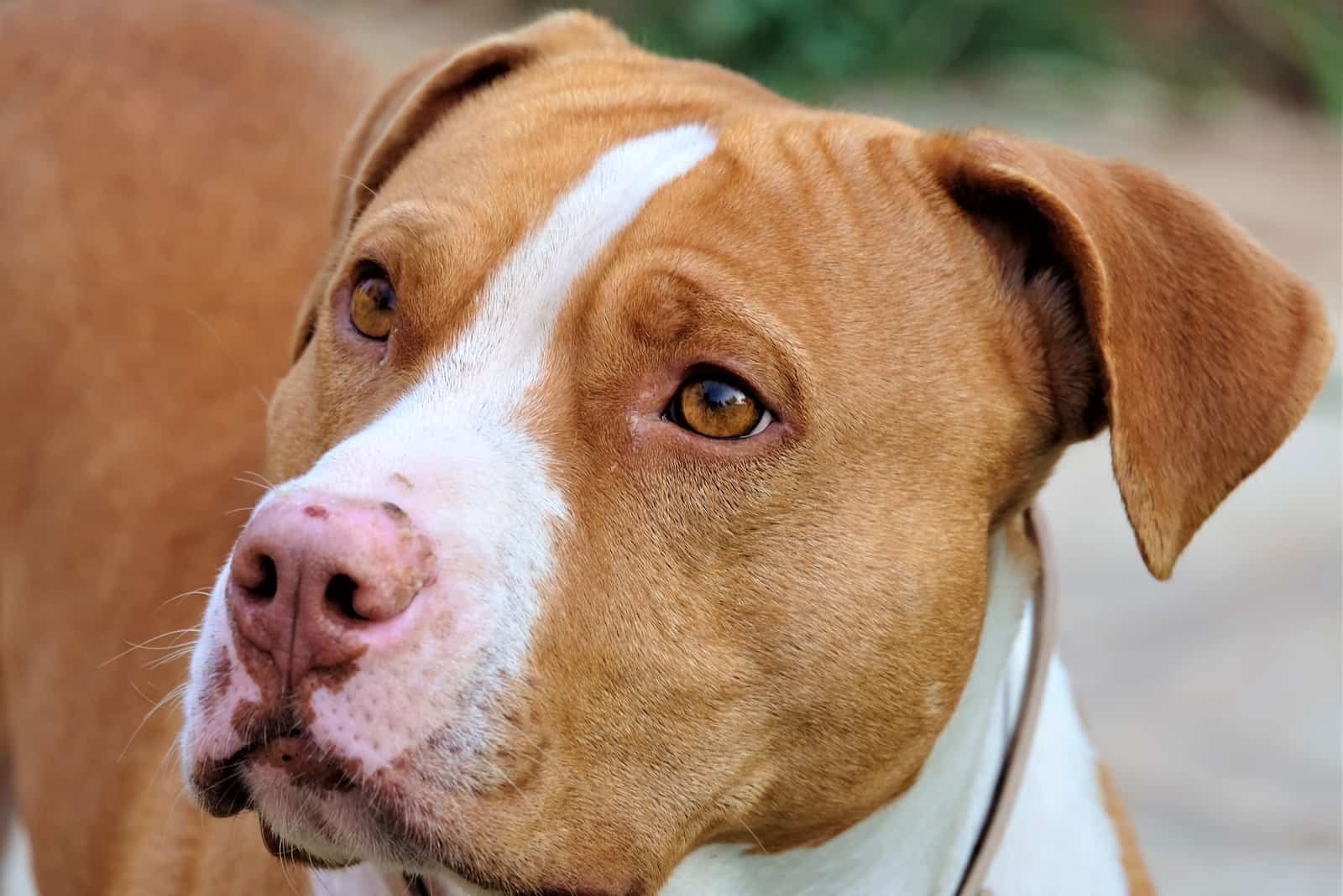One of the most beloved traits in canines is their cute black noses. What’s not to love about them? They make any dog look like a loveable teddy bear!
But what about dogs with pink noses? These pups seem to deviate from the norm, which is why some dog owners might think that there is something wrong with their furry friend.
Believe it or not, just like coat colors, dogs’ noses can come in various colors and patterns. In fact, there are five main color variations of dogs’ noses: pink noses (sometimes also known as liver noses), butterfly noses, dudley noses, blue noses, and black noses. All of these are the result of specific genes, and all are perfectly natural – most of the time.
Are pups that have pink noses in danger of certain health issues, or is this a sign there is something wrong with the dog you’re looking at? There are many unique things you should know about dogs with pink noses.
If you want to learn more, you’re in the right place. We’ll tell you everything there is to know about dogs with this unique trait and explain whether dogs with pink noses need any special care.
Let’s begin.
Are There Dogs With Pink Noses?

Canines come in all shapes and sizes, as well as in many color variations. Some colors come naturally, while others have been achieved through selective breeding, as well as various mutations that parent dogs pass on to their offspring. As such, certain colors have been inherited through the generations.
Some dogs are born with a nose that comes in the same color as their coat. This is usually the case with black dogs, as almost all of them have black noses. Many dogs that come in other coat colors also have black noses.
Overall, nose color is determined by the amount, as well as distribution, of the pigment melanin in a dog. It isn’t unchangeable – in fact, it can change with age and according to the dog breed.
Melanin is a pigment that protects the skin, including the nose, from sunburn. As such, the more melanin skin has, the less chance of skin cancer and other similar conditions there is.
Not just that, but the amount of melanin determines the name of the nose color.
Some dogs, however, don’t have much melanin in their bodies, including their noses. If a nose has very little pigment, it will appear to be pink. The less melanin, the brighter and lighter the shade of pink.
Sometimes, the pink color is also caused by the liver gene that dilutes the existing color. This gene is recessive. In other words, both parents have to be the carriers of this gene for the dog’s nose to be pink.
For the liver genotype to express itself, it has to be bb. Dogs with a BB or a Bb genotype carry a dominant black gene, and as such, their noses will be black.
If a dog is liver-colored, that would mean that the liver gene has affected all the melanin in its body. As such, these dogs cannot develop a single black, blue, or grey hair. Instead, the liver gene would turn their coat color into brown, their eyes amber or green, and the nose can range from brown to pink.
Some dogs might have a pink nose, but their coats will be in different colors, even including black. In such instances, it isn’t the liver gene that’s causing the pink color of their noses, but an entirely different combination of genes. The possibilities are many.
What Dog Breeds Have Pink Noses?

Dogs of many dog breeds can end up with pink noses – although most of these dogs aren’t according to the breed standard and are considered a genetic fault.
However, many breeds can have a brown nose or a pink nose, and in most of these, it is according to the standard set by major kennel clubs.
These dog breeds include:
• Australian Shepherd
• Boxer
• Bull Terrier
• Cocker Spaniel
• Dalmatian
• English Springer Spaniel
• Field Spaniel
• Heeler
• Nova Scotia
• Pointer
• Siberian Husky
While pink noses can be adorable, and many people find them desirable, if you want a purebred dog, it’s important to check the breed standard to make sure if the pink nose is up to it.
The breed standard determines much more than just the dog’s appearance. It also lets you know how the dog will behave. If your desired pup doesn’t look the part, chances are he won’t behave as you expect him to, and this can be an issue.
Pink Spot On Dog’s Nose

Most of the time, a pink spot on a dog’s nose isn’t a cause for concern, even if it just appeared. There are many reasons a pink spot can appear on a canine’s nose, and we’ll talk about them later on.
In fact, there are names for spotted noses, depending on how the pink spots are distributed. Here’s what they are:
The Dudley Nose
The dudley nose is a black nose that has turned pinkish in the middle. This pink spot will spread outwards until it covers the entire nose.
A dudley nose is usually the result of pigmentation loss, whether that be due to a certain health condition or environmental influences.
If you compare the color of a dudley nose with other pink nose colors, you’ll notice that dudley noses are rather dull, and they always have black edges.
Here are some breeds that are prone to dudley noses, although no dog is born with it:
• Doberman Pinscher
• Golden Retriever
• Irish Setter
• Pitbulls
• Pointer
• Poodle
• Samoyed
• White German Shepherd
Dudley Labs are among the most popular dogs with a dudley nose. Many people consider them to be an entirely different dog breed, but they are just Labradors without nose pigment.
Bull Terriers are also a breed that is mistakenly claimed to have dudley noses. However, as these dogs are born with such noses due to their white coat and loss of pigmentation, they don’t have standard dudley noses.
Butterfly Nose
A butterfly nose is a black nose with pink patches randomly distributed on its surface. You can also call it spotted, as that’s precisely what the pattern looks like.
Most of the time, a butterfly nose is associated with the merle pattern. The merle gene dilutes all pigments in the dog’s body, but not entirely. Instead, it leaves the dog looking as if someone spilled several coat colors on them.
The merle gene is associated with several health conditions, including deafness, vision problems, and heart conditions.
A butterfly nose is also present in some dog breeds with extreme white spotting patterns. These dog breeds include:
• Boxers
• Bull Terriers
• Dalmatians
• Dogo Argentinos
• Pitbulls
• Heelers
Sometimes, a butterfly nose can also be associated with a condition called vitiligo. Vitiligo is an autoimmune disease that makes cells gradually lose their pigments, which can make your dog look spotted.
Snow Nose
Snow noses look similar to dudley noses, but there is one big difference: They are not permanent. Some dogs develop them in the winter months, which is why they are also called winter noses. Once the temperature rises, snow noses return to their usual black color.
Dog breeds prone to noses that change color to a snow nose are:
• Bernese Mountain Dog
• German Shepherd
• Golden Retriever
• Labrador Retriever
• Siberian Husky
Despite the name, winter noses can appear even in dogs that live in warm climates, but they’ll only stay pink during the colder season.
Fortunately, as there isn’t any proof that the color change is anything but a cosmetic issue, it isn’t harmful, and you don’t have to treat it. It will eventually go away on its own, and the nose will turn black once again.
The cause behind snow noses isn’t yet known. There has been some indication that it is caused by an enzyme called tyrosinase, which controls melanin production. Tyrosinase is sensitive to cold weather, which is why dogs’ noses might change color in winter.
Causes Of Pink Noses In Dogs

A pink nose is often simply the result of genetics. This is something we’ve already talked about. If your dog is born with a pink nose, there really isn’t a reason for you to worry.
However, if your dog’s nose turns pink all of a sudden, this might have you worried.
While we would suggest that you take your dog to the vet the moment you suspect the nose color change is due to disease, here are the most common causes of a nose color change in dogs:
• Age: As your dog ages, the production of melanin decreases. This is why grey hairs and paler skin appear. As such, many senior dogs’ noses will gradually change colors to pink.
• Weather: We’ve already talked about snow noses that turn pink in the winter.
• Bacterial infections: Some bacterial infections can cause the nose to become inflamed. This will give it a sore or crusty appearance and might result in the dog’s nose losing color. A dog with a bacterial infection will likely develop other symptoms, such as sneezing or fever.
• Allergies: Other than bacterial infections, allergies can also make the nose inflamed. This is especially the case if your dog has touched an allergen with his nose.
• Injury: If a nose’s skin is torn or cut, it might become pink during the recovery process. Dogs can easily get injured on a plastic food bowl, which is why you should always use ones made out of stainless steel or ceramic ones.
• Sunburn: Finally, if your dog’s sensitive nose has been heavily exposed to sunlight, it might get burned. This will require a healing process similar to one after an injury, so the injured place will be pink for a while.
Can Dogs Noses Get Sunburned?

No matter the coat color, all dogs’ noses can get sunburned – but pink noses are more prone to sunburns than dogs with dark pigment. This is similar to humans – people with lighter skin will get sunburns easier than people with darker skin tones.
Many dogs with pink noses also have white coats. White fur usually means that their skin is rather fair. Not just that, but white hairs cannot protect the skin from the sun’s harmful rays. This means that the dog’s entire body is more prone to sunburns compared to breeds of dogs with a black pigment on their noses.
Do Dogs With Pink Noses Need Sunscreen?
Dogs with pink noses require more care than dogs with another nose color. They have less pigment, and as such, they aren’t protected from the sun’s harmful rays.
There are some sunscreens made especially for dogs that can help you prevent sunburns on your doggie’s sensitive nose. However, they aren’t mandatory. The best prevention is to simply keep your dogs away from the sun as much as possible.
Don’t ever attempt to use human products on your pooch’s sensitive skin. These don’t have an appropriate pH level and might only harm your dog’s nose.
Do Dogs With Pink Noses Change Nose Color?

There are some instances where dogs with pink noses end up with a darker nose later on. Most of the time, this is the case with winter noses that turn black once the weather gets warmer. The depigmentation isn’t permanent, and their noses will go back to their regular color.
The same happens if a dog’s nose is injured or if a dog is suffering from some medical condition. In none of these instances is the color change permanent – except on some occasions with severe scarring.
Some other dogs are born with pink noses, but their noses turn dark as they grow into adults. The same may happen to liver dogs or dogs in pale colors, as they will be born with less pigment than dogs in dark colors.
These breeds include but are not limited to:
• Beagles
• Border Collies
• French Bulldogs
• Golden Retrievers
• Irish Setters
• Labrador Retrievers
• Poodles
• Pugs
• Samoyeds
If you see a newborn puppy with a nose that looks similar to a butterfly nose, this is likely a sign that its nose will turn black in time.
How Do I Know Whether My Dog’s Nose Will Change Color?
Most of the time, newborn puppies are born with bright noses. If you’re a breeder or looking to buy from one, look at the puppy’s nose. If a puppy is younger than 8 weeks old and has darker spots on its nose, the color will likely turn black before the puppy is three months old.
The color of these spots will usually determine what color the dog’s nose will end up being. For example, if its nose has liver spots, the nose will likely turn liver in time.
However, only time will tell whether a dog’s nose will truly change color or not. You can never be entirely certain. Sure, most puppies don’t end up with spotted noses unless they are merles or have a spotted coat themselves. However, this isn’t a rule, and butterfly noses are a thing.
When Will My Puppy’s Nose Change Color?
The first 8 to 12 weeks are crucial when it comes to puppy nose color. Most of the time, you’ll know early on whether your puppy will change color or not because there will be a dramatic change in pigment in just these first few weeks.
As mentioned earlier, your puppy’s nose should already be quite dark by the time they are 12 weeks old. However, even if this doesn’t happen, there is still a chance his nose color will change in the next few months.
In other words, there isn’t a precise time when your dog’s nose color should settle down. Many dogs don’t have black noses until they are adults. Sometimes, this process can take up to three years.
Even after that, there are chances of depigmentation, and the nose might revert to having pink spots or a dudley nose.
Are Dogs With Pink Noses Healthy?

Photo from: @samoyed_worldwidee
Dogs with pink noses are perfectly normal, and many are up to the breed standard. Pink noses don’t necessarily mean that there is anything wrong with your dog. It is simply depigmentation and means that the dog doesn’t have pigment on its nose.
Most of the time, dogs with pink noses will be just as healthy as dogs with darker pigmentation. The biggest effect of the lack of pigment is simply cosmetic, and it doesn’t affect anything other than the nose’s appearance.
No matter the color of a dog, a pink nose can occur. While it’s rare on black dogs, it can still happen, and most of the time, it’s perfectly fine.
However, on some occasions, a pink nose requires additional medical attention. This is if you notice a sudden change in color that is followed by other symptoms, such as sneezing, heavy breathing, flaky skin, or a runny nose.
If this happens, take your dog to the vet as soon as possible. Most of the time, the cause of a nose changing color is a bacterial infection or allergies, but you’ll still want to rule out more serious medical conditions.
Sometimes, a pink nose is also a sign of a genetic condition, such as albinism, the merle gene, or vitiligo.
While you should keep dogs with pink noses away from direct sunlight, they don’t require any special treatment – other than, perhaps, changing their plastic food bowls.
Read Next: 21 Dogs With Long Ears: Which Breeds Have The Largest Ears?













